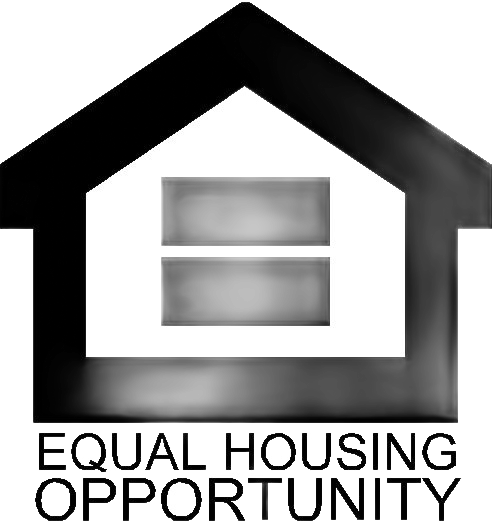What the Fed’s May 2025 Rate Decision Means for Homebuyers and the Economy
What the Fed’s May 2025 Rate Decision Means for Homebuyers and the Economy

On May 6 and 7, 2025, the Federal Reserve held its third policy meeting of the year and, as many expected, decided to keep interest rates unchanged at 4.25% to 4.5%. This marks the fifth straight meeting with no change, keeping rates at the same level they've been since December 2024.
While the decision to hold rates steady may not come as a surprise, it carries major implications for inflation, consumer behavior, the housing market, and the broader economy. In this article, we’ll break down why the Fed made this decision, what the key takeaways are, and what you should be watching in the coming months, especially if you're a current or future homeowner.
Why Did the Fed Keep Rates Steady?
Federal Reserve Chairman Jerome Powell cited elevated uncertainty about the economic outlook as the main reason behind the decision. In his post-meeting press conference, Powell stated:
“Uncertainty about the path of the economy is extremely elevated... the risks of higher inflation and higher unemployment have risen but they haven’t materialized yet.”
This is an important distinction. Powell is not saying the economy is faltering. He’s saying the Fed sees potential risk on the horizon but hasn’t yet seen enough real-world data to justify a change in direction. With this in mind, the Fed’s decision reflects a cautious approach: wait for more clarity before taking action.
What’s Causing the Uncertainty?
Much of the Fed’s hesitation stems from recent tariff increases, which Powell described as “significantly higher than anticipated.” These tariffs, aimed at imports from various countries, have the potential to influence inflation, consumer prices, and business investment.
However, these trade policy changes are too recent to fully evaluate. The economic ripple effects may take months to appear in the data. Until then, the Fed is not willing to make bold moves—either cutting rates to stimulate growth or raising them to curb inflation—without more clarity.
Inflation Trends and the Fed’s 2% Target
The good news is that inflation, which surged in 2022 and 2023, has continued to decline and is now moving steadily toward the Fed’s long-standing 2% target. While not quite there yet, the trend suggests that previous rate hikes are having the intended effect of cooling price growth without triggering a recession.
This helps explain why the Fed doesn’t currently see the need to raise rates further. With inflation moderating and the labor market remaining resilient, there's no urgent need for more tightening.
What Are the Odds of a Rate Cut?
While May’s meeting ended without a rate change, all eyes are now on the Fed’s next two meetings:
June 17 and 18, 2025:
- 17.1% chance of a rate cut to 4.00% to 4.25%
- 82.9% chance of rates remaining at 4.25% to 4.50%
July 30 and 31, 2025:
- 9.2% chance of a cut to 3.75% to 4.00%
- 52.5% chance of 4.00% to 4.25%
- 38.3% chance of no change
While those are just probabilities, they show a clear shift in momentum. Market expectations are slowly leaning toward a potential rate cut by the end of summer, especially if inflation continues to cool and trade-related uncertainties begin to resolve.
Consumers and markets alike will be watching the June data releases closely, including employment reports, consumer spending, and inflation indexes.
How This Affects Homebuyers and Borrowers
If you're in the market to buy a home, refinance, or take out a personal loan, this steady-rate environment presents both opportunities and challenges.
Mortgage Rates
Mortgage rates generally move in tandem with expectations for future Fed decisions. While the federal funds rate doesn't directly control mortgage rates, it does influence the overall cost of borrowing. Because the Fed is holding steady, mortgage rates are likely to remain relatively stable in the near term, though still higher than the ultra-low rates of 2020 and 2021.
If the Fed moves to cut rates later this year, that could lead to modest improvements in mortgage affordability, depending on how the bond market responds. However, buyers shouldn’t count on a dramatic drop in home loan rates overnight.
Timing Your Purchase
With rates holding steady, some buyers are choosing to move forward with purchases now, especially in areas where home prices are continuing to rise or inventory is tight. Others are choosing to wait in hopes of securing a lower rate in the second half of the year. There’s no one-size-fits-all approach here, but keeping an eye on the Fed’s next moves is a smart strategy for anyone planning to buy in 2025.
What’s Next?
The Fed’s next meeting is set for June 17 and 18, 2025. While another hold is the most likely outcome, July’s meeting could bring a different result, especially if inflation continues its downward path and the economy absorbs the impact of new tariffs without major disruptions.
In the meantime, consumers should remain cautious but optimistic. The U.S. economy remains stable, and the Fed’s decision to hold rather than hike suggests that the worst of the inflation crisis may be behind us.
Staying informed about rate trends and planning accordingly will be key for homebuyers, borrowers, and investors navigating the rest of the year.













